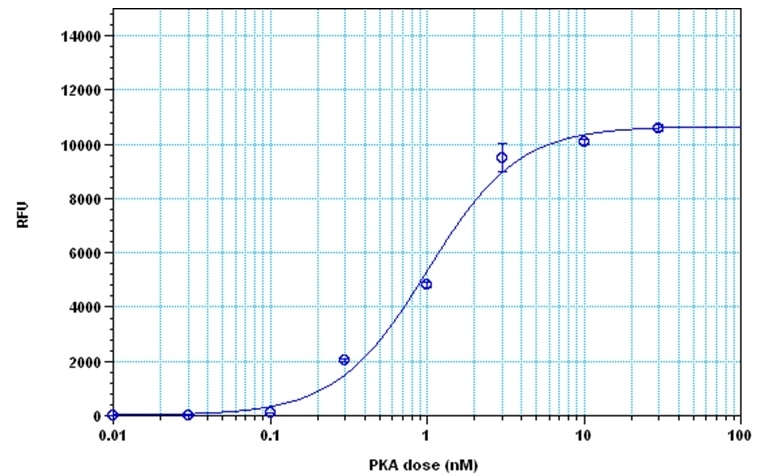PhosphoWorks™ Fluorimetric ADP Assay Kit
Red Fluorescence
ADP is involved in many biological reactions such as protein kinases. Our ADP assay kit can be used for assaying protein kinase reactions universally by monitoring ADP formation, which is directly proportional to enzyme phosphotransferase activity and is measured fluorimetrically. This kit provides a fast, simple and homogeneous assay for measuring ADP formation or depletion. The assay is continuous, and can be easily adapted to automation. The kit is convenient, requiring minimal hands-on time. Protein kinases are of interest to researchers involved in drug discovery due to their broad relevance to diseases such as cancer and other proliferative diseases, inflammatory diseases, metabolic disorders and neurological diseases. Most of commercial protein kinase assay kits are either based on monitoring of phosphopeptide formation or ATP deletion. Our ADP assay kit is more robust for assaying protein kinases than most of commercial kinase assay kits.


| Catalog | Size | Price | Quantity |
|---|---|---|---|
| 21655 | 100 Tests | Price |
Storage, safety and handling
| H-phrase | H303, H313, H333 |
| Hazard symbol | XN |
| Intended use | Research Use Only (RUO) |
| R-phrase | R20, R21, R22 |
| UNSPSC | 12352200 |
Instrument settings
| Fluorescence microplate reader | |
| Excitation | 540 nm |
| Emission | 590 nm |
| Cutoff | 570 nm |
| Recommended plate | Solid black |
Documents
Contact us
| Telephone | |
| Fax | |
| sales@aatbio.com | |
| International | See distributors |
| Bulk request | Inquire |
| Custom size | Inquire |
| Technical Support | Contact us |
| Request quotation | Request |
| Purchase order | Send to sales@aatbio.com |
| Shipping | Standard overnight for United States, inquire for international |
Page updated on January 6, 2026
